Winners of Transiting Cities - Low Carbon Futures Competition
By Bustler Editors|
Monday, Jan 21, 2013

Related
A few days ago, we published one of the finalist entries of the international design ideas competition, Transiting Cities - Low Carbon Futures. The competition was open to designers from around the world; landscape architects, architects, urban planners and associated design disciplines to develop innovative visions for Latrobe City, in eastern Victoria, Australia to make the transition from a singular economy dominated by the power industry (coal mining and electricity generation) into a diversified economy and prosperous low carbon regional city.
Here are now all the winning entries, including honorable mentions and student honorable mentions.
First Prize: Reassembling Flows
Team Name: Parallax Landscape
Team Members: Kees Lokman, Yu Ding, Melissa How
Country of Origin: United States
Project Description (shortened):
In the words of Peirce Lewis, Latrobe has become "our unwitting autobiography, reflecting our tastes, our values, our aspirations, and even our fears, in tangible, visible form"[1] (Lewis 1979). Current industrial land use practices in Latrobe, such as mining operations and dairy farming, come with tremendous environmental costs. Recent reports state that Australians, on average, produce over 20 tonnes of C02 emissions per person per year, ranking the country as the world's highest carbon dioxide polluter. Beyond greenhouse gas emissions, mining operations are a large source of surface and groundwater pollution. Large amounts of water are extracted from local aquifers for mining operations and irrigation-based agriculture, causing destabilization of soil conditions, increasing the chance of river bank failures, and making the area more prone to flooding and seismic activity. Moreover, intensive cattle and dairy farming operations produce enormous amounts of manure which is currently disposed of in inadequately sized and lined lagoons or storage structures that allow pathogens to escape into the surrounding environment. The result is an unsustainable landscape that privileges short-term economic gain over human and environmental health.

However, Latrobe's identity on both the local and global level is one that is so deeply rooted in its mining tradition that to deny its significance in the valley's future is equally short-sighted. By proposing a gradual shift over time from the current coal oriented energy economy and opening up its remnants to its people, this project honors the rich and storied history of the region while responding to the need for cleaner energy alternatives. Reassembling Flows thus aims to change this paradigm by repurposing existing infrastructures, optimizing resource utilization, and structurally integrating ecosystem services into design processes across multiple scales. Understanding Latrobe Valley as a complex system of interconnected flows of industrial processes, ecological systems, and cultural networks allows for the transformation of currently discarded "waste" byproducts from these processes into valuable resources--creating opportunities from liabilities. No longer an exploited landscape of extraction, Latrobe becomes a key part in an extensive network of social, environmental and economic exchanges that extends throughout and spatially connects the Gippsland Region.
[1] Peirce F. Lewis, “Axioms for Reading the Landscape: Some Guides to the American Scene,” in The Interpretation of Ordinary Landscapes edited by Donald W. Meinig (Oxford University Press, USA): 1979.
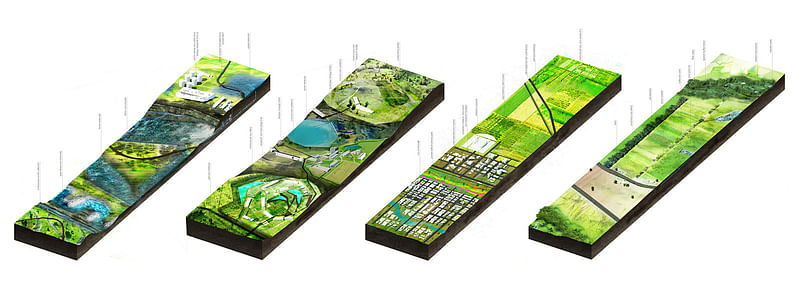
Second Prize: Dirty to Mighty: Brown is the new Green
Team Name: Daichi
Team Members: Daichi Yamashita
Country of Origin: Japan
Project Description (shortened):
Dirty to Mighty is a response to two major issues Australia faces in relation to energy and sustainability.
- Australia’s declining oil production with merely 3.9 billion barrels of proved oil reserves (0.2% of the world) coupled with the increasing oil consumption, exceeding 1 million bpd of oil in 2011, pose a threat to the country’s energy security. At this rate, self-sufficiency in oil is predicted to drop from the current 50% to 20% by 2020.
- The world coal consumption continues to rise, especially in Australia´s prime export countries such as China and India. (2.8 and 0.6 billion short tons in 2010 respectively.)
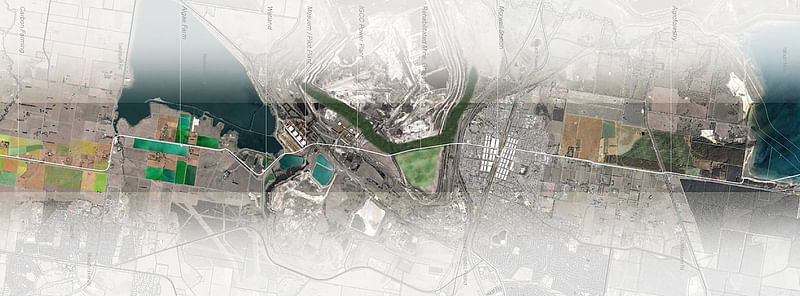
How can Latrobe City act as the key catalyst in providing a solution to such critical and urgent problems?
Currently, the power stations in Latrobe Valley together emit around 65 Mt of carbon dioxide each year. The stations, however; cannot simply be terminated as they generate 90% of Victoria´s electricity and employ 3100 people. In addition, the area is gifted with 65 billion tonnes of brown coal with an estimated 33 billion tonnes to be “potentially economic”.

Dirty to Mighty proposes to use brown coal to produce not only electricity but also liquid fuel as well as many other high value products, while utilizing the CO2 released during the conversion process into additional products including oil, creating a highly viable yet sustainable means of achieving energy security and economic diversification. Brown coal becomes the essential element leading to a completely new vision of Latrobe Valley which utilizes its abundant natural resources without compromising environmental impacts. Along the axis of the provided site, the project introduces a technological corridor of research/innovation facilities focused on the liquefaction and gasification of brown coal as well as the sequestration and conversion of carbon dioxide.

Honorable Mention: Fields of Synergy
Team Name: PUPA
Team Members: Justina Muliuolyte, Tadas Jonauskis
Country of Origin: The Netherlands
Project Description (shortened):
Latrobe is facing a challenge to control its growth based on changing conditions in industry, economy and lifestyle. Fields of synergy give unique opportunity to create exclusive and outstanding future. It is a strategy for re-inventing, overlapping and mixing transiting territories. It generates development and creates space for improvement. Such areas combine nature, urban, production and resource fields together.
There is natural exchange of land, infrastructure, mobility, people, economic activities, water, energy and waste-products. Smart management of these fields allows preparing for the future changes, recovering overused territories and improving living environment of existing. Synergy is achieved by combining, re-cycling and cascading principles.

Synergies of combining overlap economies, habitats, and activities so they can exchange knowledge, products and resources. Synergies appear in double use of landscapes, shared services and shared environments.
Synergies of re-cycling take wasted products, buildings, objects and territories to create new function and meaning.
Synergies of cascading create a cycle of re-using the rest products, rest land as a source of the other economies or other habitats.

Latrobe 2050: new spin off economies are developed from the mining industry; community lifestyles become unique and variable; new flexible mobility connects region into one entity; new tactics for food production is applied; renewable energy takes over brown energy; region increases biodiversity; natural resources are smartly managed.
These goals are achieved by re-adaptation of the old mines and brown fields. Existing mines are showcasing the power of the region. They are industry of pride, identity and uniqueness. Empty excavated old mines give space to re-adapt and experiment. Innovative and diverse fields of synergies are applied and showcased, where old quarries are merged with nature, urban environment and production. It is the places of the future – not past.
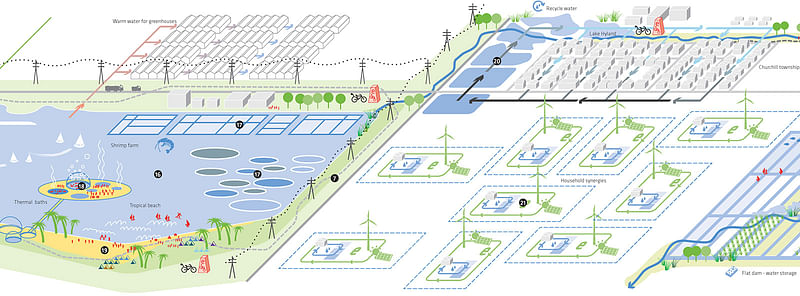
Honorable Mention: Networked Ecologies: Rethinking Remediation (previously on Bustler)
Team Name: Studio One
Team Members: Mona Ghandi, Carlos Sandoval, Hassan Sazmand
Country of Origin: United States
Project Description:
The inevitable shifts in global climate and economical conditions have made us question and rethink the ability of the cities to resist and adapt to these changes. A city like Latrobe whose landscape, economy and social conditions are based primarily on coal based energy production is particularly vulnerable to the global and local changes.
With the coal reserves and production reducing, the social and ecological conditions in Latrobe have already started to decline. By mapping the area, several sites that are currently underutilized or to become vacant with the mining decline were found. Networked Ecologies rethinks these sites as urban and ecological connectors as spaces that will provide robustness to the landscape.
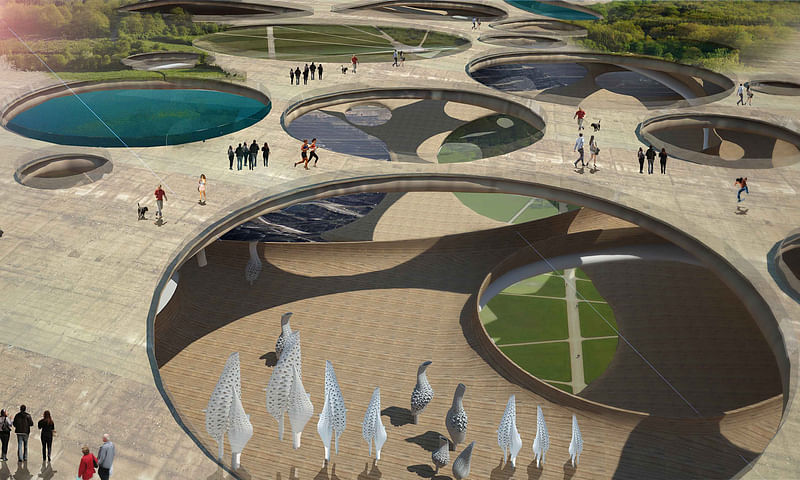
Depending on the site location and conditions, a variety of programs ranging from landscape / mining remediation, to urban agriculture are defined. These “in-between” sites will grow and develop according to the specific conditions and uses, eventually creating a network of infrastructure that will provide robustness to the city.
This new infrastructure will provide energy production alternatives, by incorporating a wind energy generation system to the building’s tectonic. Networked Landscapes proposes an ecological remediation of the mining sites by creating built wetlands that will also regenerate the species of the area.
The selected sites provide a variety of self-sustainable economical activities creating a stronger local economy that can now provide a wider range of products to the outside economy.

Depending on their distance to vacant buildings, the project re-utilizes and combines with them, reprogramming the buildings with community-oriented activities. The local economy depends on each other, rather than on a central hub, generating a strong economical network.
As the Networked Ecologies expand, the existing functions of the city are intensified and complemented. This new Network is ever-changing and continually growing and adapting to the existing conditions.
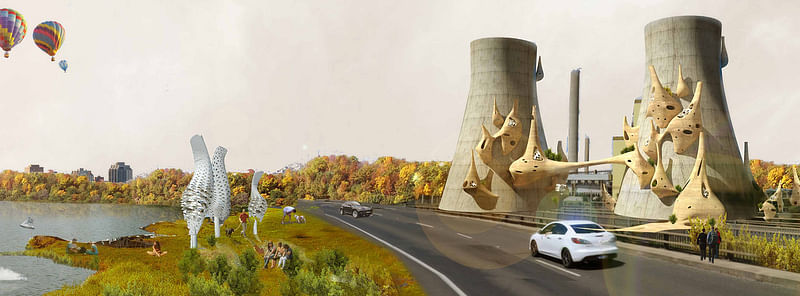
Honorable Mention: Hydraulic Network
Team Name: Truitt Foug Architects
Team Members: William Truitt, Carolyn Foug, Marsha Bowden, Adam Wong
Country of Origin: United States
Project Description (shortened):
In the upper reaches of the Rio Grande Valley in Colorado, water is still managed as a commons. I had the opportunity to visit San Luis, home of traditional acequia systems (gravity-driven irrigation ditch) that nurture soils, plants, and animals. I was there to offer solidarity to the local communities engages in a major struggle to defend the commons and the oldest system of water rights in Colorado. What the irrigation ditches produce is not merely a market commodity but a denseness of life. (Shiva, p27).
SHIVA, VANDANA (2002). Water wars: privatization, pollution, and profit. Toronto, Transcontinental Press.
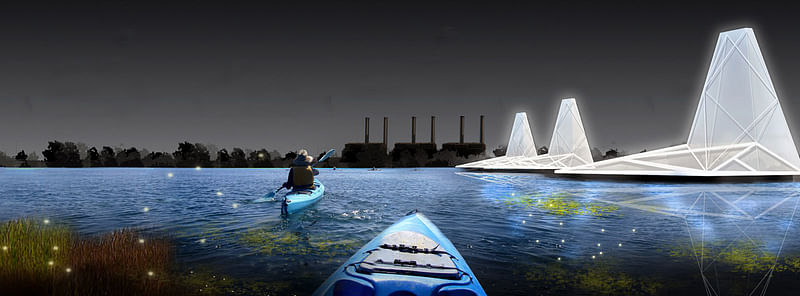
In Water Wars, Vandana Shiva describes the possibility of water management for the use of a larger public. An integrated ecosystem and way of life exists in one part of the Rio Grande Valley where other water systems have been privatized and divided the larger landscape. As populations in dry landscapes grow, water rights cause conflict and a rush to ‘land grab’ access to viable water systems. Shiva uses Gujarat and Punjab as case studies in the problem arising between large populations, dropping water tables and the privatization of the remaining natural resources. Climate change shows, however, that water issues develop in every region, not simply in already challenged or established crisis zones.
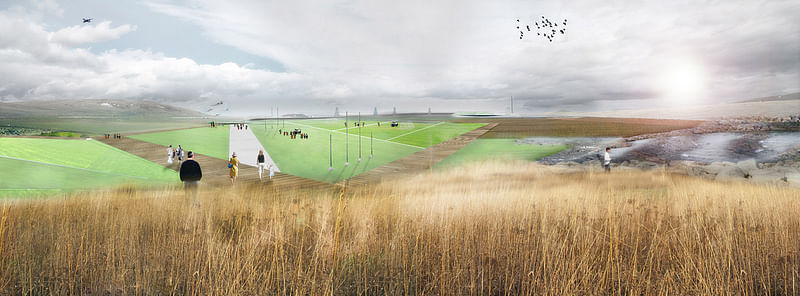
The Latrobe Valley presents a unique landscape whereby the abundant natural resources have been historically sold for profit, first for local energy consumption and now for the global market. Water here, in fact, is an impediment to the extraction of coal for cheap energy consumption, and so large swaths of land have been de-watered, causing the water table to drop over 50 meters. The new artificial landscape, revealing the hidden ecology, does provide an opportunity to rethink the relationship of living space to water. This project re-imagines the Latrobe Valley as an interconnected hydraulic network. While the current infrastructure acts to separate uses and flows of the entire region in order to facilitate the transport of goods, a slight alteration of the larger landscape quickly transforms the region into an infrastructural space that is decidedly public and connected with the everyday living condition. Four distinct zones along a section of the valley- Sport, Morwell, Water Treatment, and Solar Pillows describe new ways in which to take advantage of the subtractive landscape.
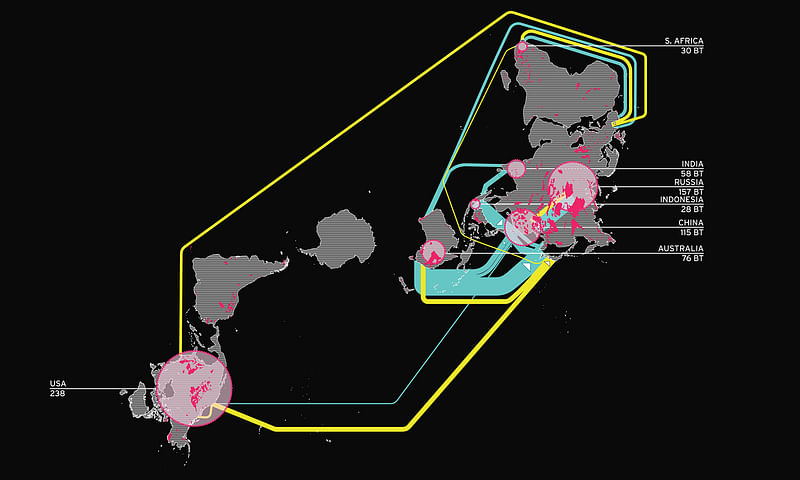
Student Prize Winner: The 2nd Law
Team Name: Explorers
Team Members: Carl Hong, Farah Dakkak, Brad Clothier
Country of Origin: Australia
University: RMIT University
Project Description (shortened):
Reimagine rural region, revolutionized by rehabilitated mines and redesigned landscape. Rebirth of reforestation and reconstruction of nature, recycled and regenerated energies. Remains are restored, to retain regional reminiscence. Reproduce opportunities for future growth through reworking and reactivation of rhizomatic infrastructure. By rebuilding an innovative residential region which integrates agriculture with industrial, Renaissance of Latrobe is now a reality.
Rebirth takes place over a period of time. A timeframe is implemented; through which the site evolves and is mediated for future change. These stages involve the participation and expertise of local miners and the machines they use on site. Doing this over stages means the reactivation of certain sites while others are under construction.
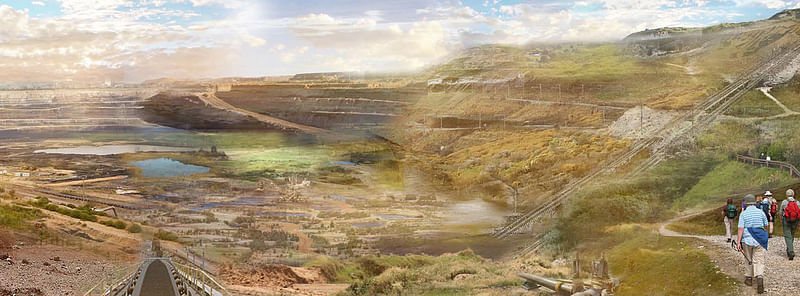
Future growth takes into account rethinking the amount of carbon emissions released and employs means of reduction. Transforming Latrobe Valley into an Eco-Hub, through considering renewable energies such as wind turbines, carbon capture devices, indigenous plantations and the reduction of carbon emitted as the main contributing drivers.
Reducing the amount of carbon emitted through the gradual retreat of coal industries will see the closure of some of Latrobe’s mines. In these instances mining rehabilitation will take place to rejuvenate the landscape and bring new life to it. The restoration plan will take effect using the mining equipment available on site, and will include the redevelopment of these open spaces over time. Providing an array of choices such as scenic and direct pathway routes; benefiting both the residents and visitors by enabling journey choice, also incorporating a range of shade, shelter and seating that provide opportunities for temporal social interaction to take place on site.
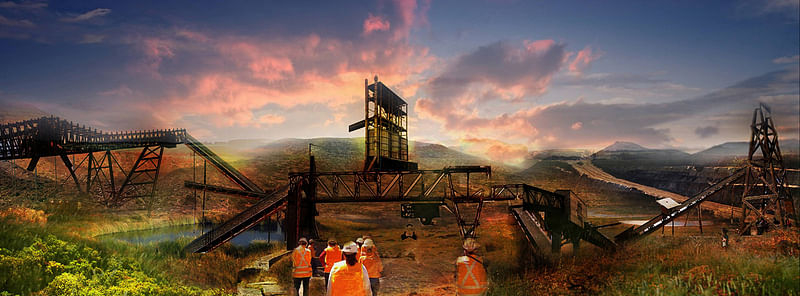
Celebrating the history and culture of towns, by generating design that takes into consideration and retains the rural township identity of the site. This is done by the introduction of submerged dwellings, which do not interrupt the existing dairy farmland functions, but build on existing and future networks.
The future will see a further development of the agricultural food production industries on site. Through the expansion of these farmlands and promoting the growth of Indigenous crops, which are well suited for local areas, requiring little maintenance. They also support the biodiversity that is important for maintaining healthy ecosystems. Crop production will positively impact the economy, as well as make way for a more resilient network of townships.
Gradual expansion of the public transport system, in an effort to promote linkage between small and main towns in the Latrobe Valley; providing services for new residential developments on the fringe of expanding main towns, and connecting main touristic attractions along the way.
By promoting diversity and expansion of local industry and economies within the Latrobe Valley the aim is to create a region that depends on a varied amount of mini-industries to fund regional growth. Creating smaller networks that function at small scales within the Latrobe Valley is vital to this, turning local produce into local food, local timber from local plantations and so forth. Tourism also has the potential to bring in substantial funding due to the close proximity of the Melbourne Metro Area.
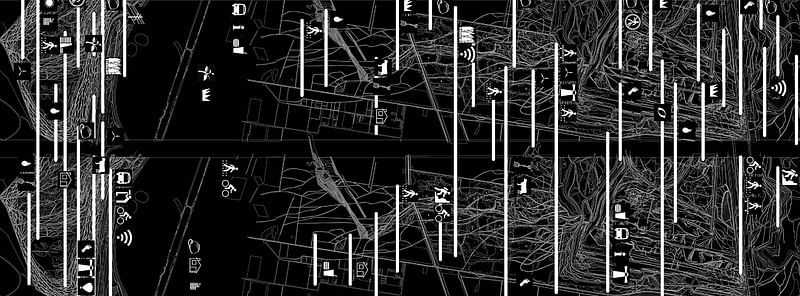
Student Honorable Mention: Twin Quarries
Team Name: DMDR
Team Members: Daniela Miler, David Rohr
Country of Origin: United Kingdom
University: University of Edinburgh
Project Description (shortened):
First glance at Latrobe: As we first look at the 1.5 by 20 kilometers strip given for a site we were struck first by the mind boggling scale of the landscape, and second by Morwell’s severe landlocking situation. This community seemed indeed to have spatial issues, partly infrastructural, but mostly related to the fact that it is lodged right next to a massive open mine. No development south of the town seemed to be possible in neither short nor medium term.
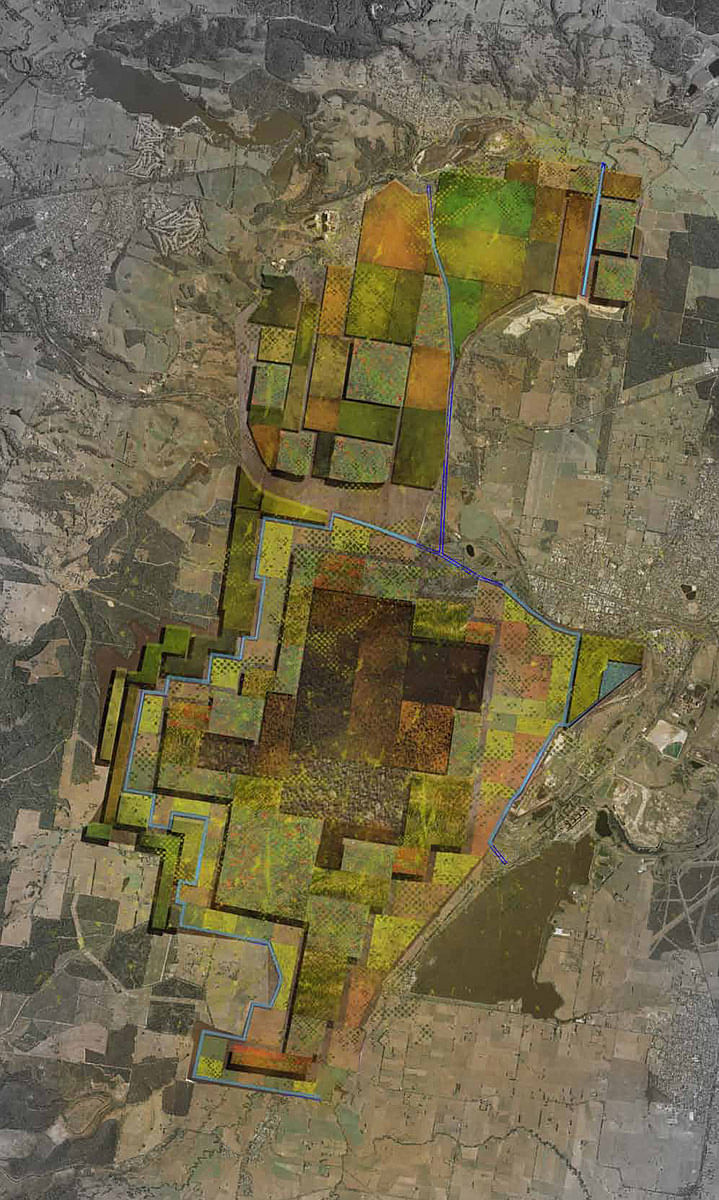
The present quarry component forced us to consider the site within the whole region. At this new scale, we started understanding how the mining industry affects the whole area. We also became aware of the site connective character, be it from west to east, or and from north to south: Morwell naturally connects Moe and Traralgon, but as a valley town, it is also located in a central position between two important landmasses, hosting some of Latrobe’s most valuable ecological habitats.
Further research into the different dynamics of Latrobe city emphasised the importance of the intertwined power supply and brown coal industry. Its economic value might be considered as proportional to its controversial and for the less, impressive carbon dioxide production. The information we found lead us to think of the energy domain as a crucial factor into Latrobe’s development past and future.
All entries were assessed by an international jury including Ass. Prof. Alan Berger (MIT), Luis Callejas (Harvard University & LCLA Office), Prof. Julia Czerniak (Syracuse University), Richard Elkington (Regional Development Australia), Prof. Peter Fairbrother (RMIT), Celine Foenander (ABC Gippsland), Ass. Prof Mitchell Joachim (Terreform ONE & NY University), Cr. Sandy Kam (Latrobe City Council), Peter Latz (Latz & Partners & University of Pennsylvania), Perry Lethlean (Taylor Cullity Lethlean Landscape Architects), Chris Reed (Stoss & Harvard University), Malcolm Smith (ARUP), Liam Young (Tomorrow s Thoughts Today), and Lou Weis (Broached Commissions).
The competition is a part of an ongoing research project conducted by The Office of Urban Transformation Research (OUTR) at RMIT University.
All images courtesy of Transiting Cities - Low Carbon Futures Competition.

Share
0 Comments
Comment as :